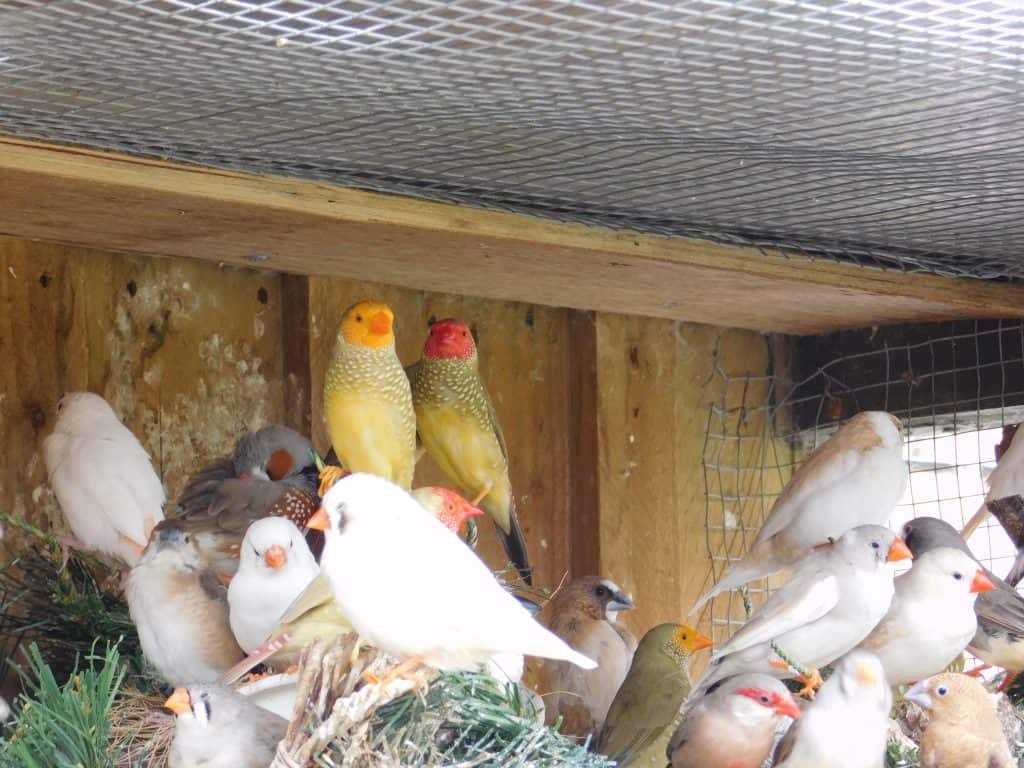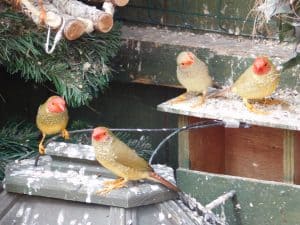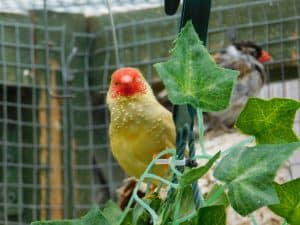There is no shortage of beautiful coloured birds in aviculture but in my opinion the stunning star finch is up there with the best of them in term of looks. These gorgeous little green and red birds also come in a range of different shades and make a great addition to a mixed flight with their gentle song and friendly personality.
The Star finch in the wild

The Star finch (Neochmia ruficauda) is originally an Australia bird and is found across the Northern Australian region from the Kimberley Range into the Northern Territory to Cape York as well as in Western Australia. They are classed as a grass finch because they typically live in tall grasses and reeds near rivers and swamps as well as in irrigated crop fields. They enjoy low trees and bushes and tend to keep away from human habitation.
Naturally, these birds live in medium to large flocks outside breeding season where they take seeds from stems and from the ground as well as catching insects. They also tend to breed in loose communities and this translates to making them a good colony bird in the aviary. I myself recently went up to seven of these little beauties in my flight and have noticed they are almost always together, a little burst of colour in the trees and perches of the area.
Stunning Star finch looks
One of the reasons that Star finches get the title ‘stunning’ for me is their looks – they are a little like a fruit salad of a bird! The original bird has a bright red head and beak with green wings, back and a yellow belly. Their tail has crimson feathers in it and their breast and sides are spotted with little white flecks.

The other great thing about the Star finch is there are a number of mutations, all just as gorgeous as the original. These include
- Yellow faced – also known as orange head, the mask and beak is orange rather than red
- Isabel – lighter, fawn colours with markings the same
- Cinnamon – green brown upperparts, pale under parts and a green-buff rump with pink tail feathers but a red face
- Fawn – pale fawn/cream upperparts and buff-yellow underparts with a pale pink tale and red face
- Yellow bodied – green areas are yellow
- Silver – silver green-grey upperparts and pale grey-green underparts with pale orange-yellow in place of the red and an orange-yellow shade in place of the yellow belly
- Clear head – lack of red on the head
- Pied – spots of white or pale yellow in random places
Sexing star finches is done by the amount of red (or orange) on the face – the cock has most of the face covered, beyond the eyes while the hens are more restricted to the area just beyond the beak and not past the eyes. Only the cock birds sing but both sexes do trill. Cock birds also exhibit a hilarious behaviour called peering where they sit closely to another cock that is singing, as if listening intently to his song. It has also been seen in related species such as Cherry Finches.
Keeping the Star finch
As an Australian bird, Star finches are built for warmer climates and therefore need to be protected from the extremes of the UK weather. This means warmth over winter and protection from wind, rain and snow. Mine live in a flight that is covered with twin wall plastic and has a tube heater on, boosted by an oil filled radiator at night or when it is cold during the day.
In terms of diet, Stars are a classic Estrildid finch – they will be happy with a standard foreign finch mix with millet sprays, egg food and fresh foods such as kale and fruit. Grit and calcium is important and some live food is taken, often when they are rearing young.
Breeding time

Star finches are often put in a similar level to Gouldian finches in terms of their difficulty to breed. Their biggest issue is that they don’t tolerate nest inspections so if you think they are nesting, resist the urge to take a peak.
In terms of a nest box, they like something with a little depth so they can hide from sight while sitting on the nest. They do like to gather up nesting material but aren’t the best builders. They lay between 3-10 eggs with 4-6 being the average. The chicks hatch at around 13 days and have a little fuzz on them.
They fledge at around 21 days and the quiet, gentle little chicks become noisy, demanding monsters! They are usually weaned at around 14-21 days. Juveniles don’t really look like Star finches because they lack the bright face colour – it takes around 4-6 months to get their adult plumage through.
In desperate measures, Star finch chicks can be fostered under Bengalese but the resulting problem can be that the young birds aren’t the best at then rearing their own – they tend to think Bengalese swoop in and do the job for them!